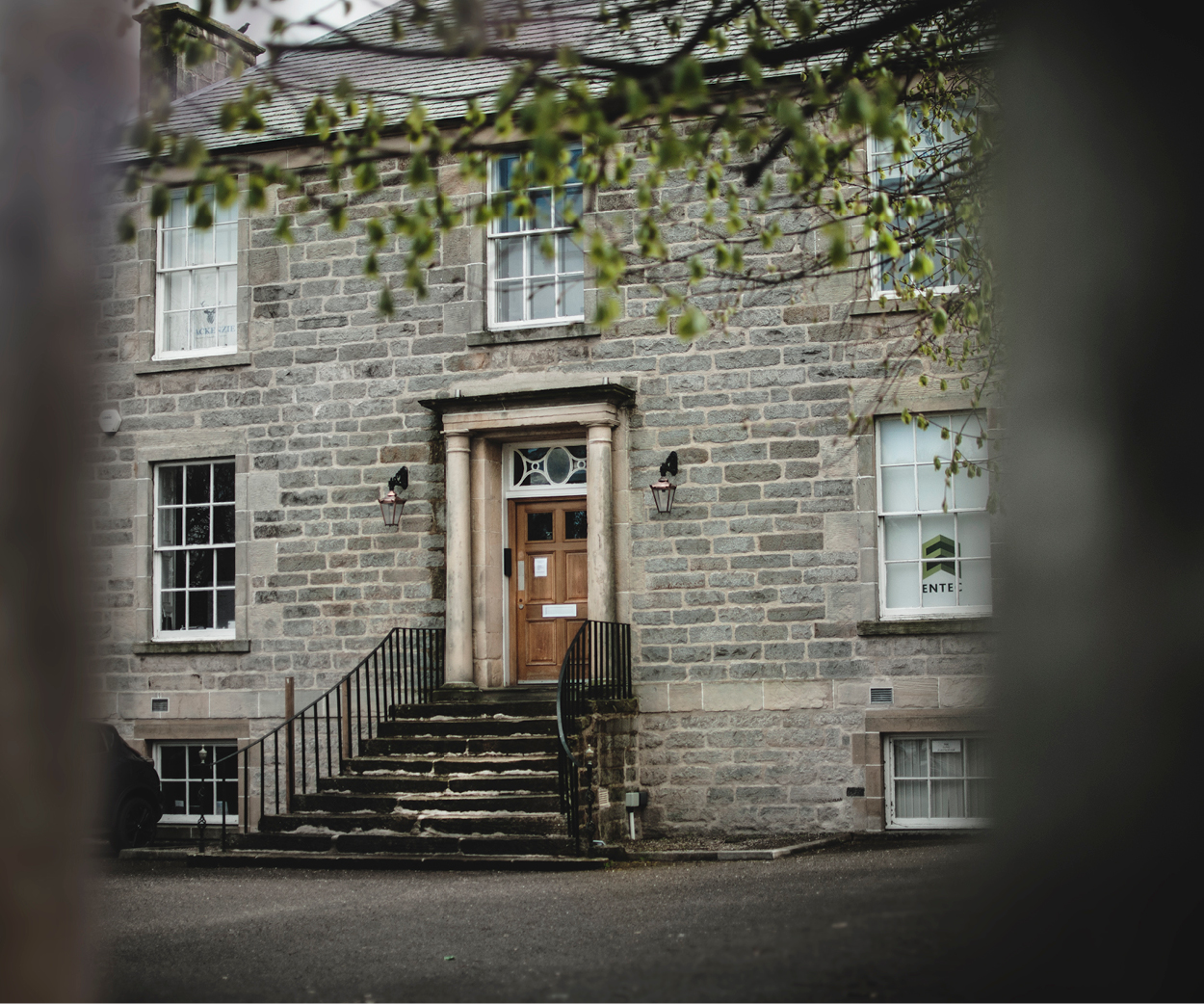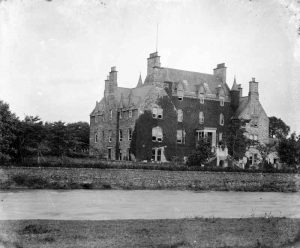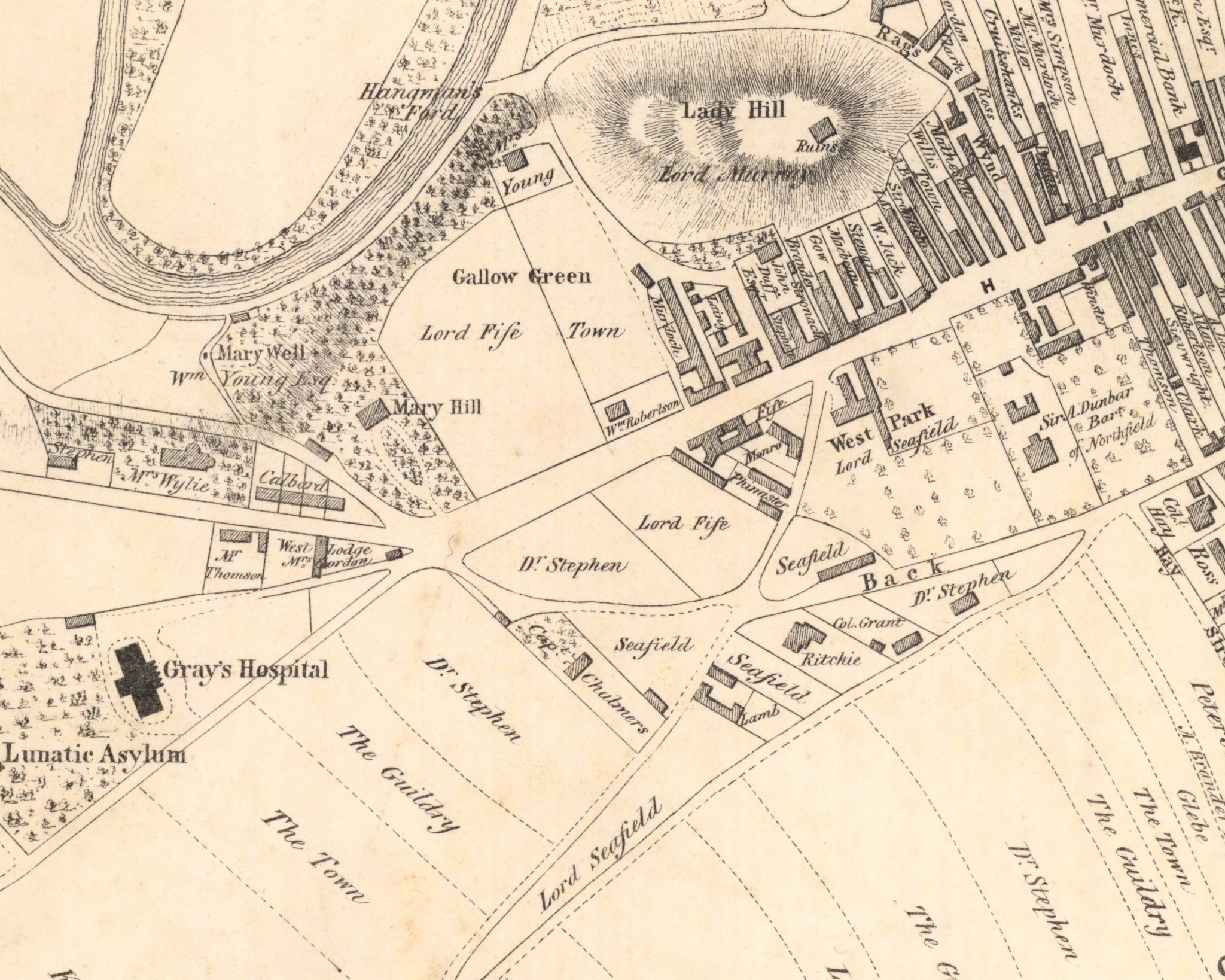Moray was prospering in the early 19th Century with wealthy landowners and merchants choosing to build prestigious homes slightly out of the town centre, where the increase in banks, shops and hostelries did not constitute a peaceful way of life. The back closes remained home to poorer families trying to make a living as best they could.
Gas lighting and water supplies certainly helped promote the desire to build grand town houses, using fine cut, polished sandstone from local quarries. It became fashionable to build at the west end of the town, around the newly erected Dr Gray’s Hospital. After a little research, we’ve discovered that Park House, formerly known as Park Place, dates back to around 1820. The neo-classical style of that period features a majestic stone staircase leading up to an impressive front door, framed by Doric columns and finished off with a fanlight window. If you look carefully around the town, you will find several examples of this distinctive style of architecture. While pleasantly imposing from the outside, the neo-classical style interior is characterised by simple features, far from the excesses of 18th Century décor. Space, light and balance were key.
Finding out about early residents of Park Place has been a bit tricky but from an 1822 Town Plan of Elgin by John Wood, Edinburgh, you can see Park Place as one of the first of these grand homes to be built out of the former medieval town settlement. It is interesting to see that the names of people owning property or ground is detailed on the map. The name William Chalmers is noted on this site. Park Place was still surrounded by open countryside and may be the reason it derived the name. A later map by Robert Ray of the Burgh of Elgin dated 1838 refers to a ‘Captain’ Chalmers. Local records do provide evidence of a Captain Chalmers of the Bengal Staff Regiment, whose death is registered in 1868 at Kussowlie (now Kausali) in the foothills of the Himalayas. But the dates didn’t quite fit. It wasn’t the same Captain Chalmers from Moray … the plot thickened!
The hunt eventually took us to the ‘Annals of Elgin’. This is a fascinating account from 12th Century right up to 1876, written by Robert Young, solicitor and magistrate during the late 19th Century. His narrative is drawn from town council, court and church records. William Chalmers appears to have been a ‘Bailie’ and magistrate in the first half of the 19th Century. It was a monumental inscription on his parent’s headstone in Elgin Cathedral that unlocked the mystery further.
The role of Captain relates to his connection with the 94th Regiment, whose origins date back to 1568 … and that’s an intriguing story in itself! We usually associate ‘quartermaster’ with seafaring, but it was a rank once used in the British Army to designate the officer responsible for the regiment’s supplies. Having retired from his civil duties in 1848, William, who was widowed in 1824, is recorded to have died at Park Place in 1851. We did find one more reference in the ‘Annals of Elgin’ – that Park Place was home to the Misses Stephen at the time of writing – 1879.
And so … I wonder who became the next residents? The hunt is on … we would love to fill in the gaps and try to build a picture of this splendid building’s past! Meantime, we will keep digging …


